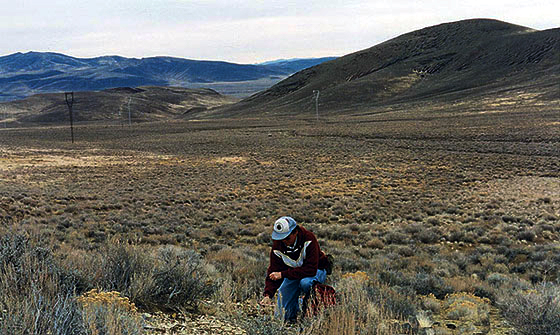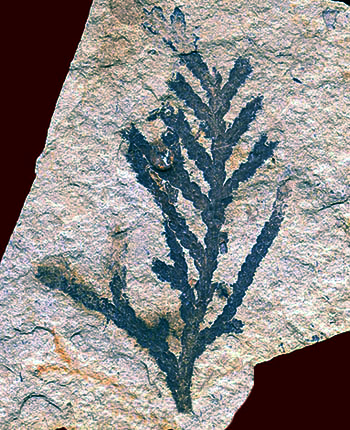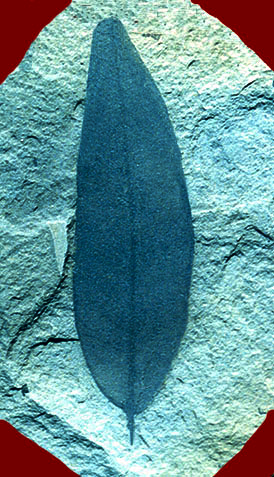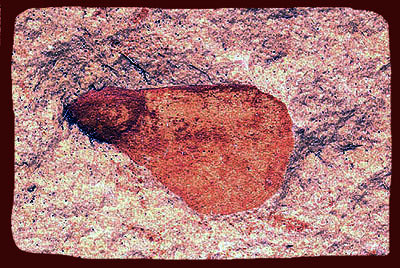
| A paleobotany enthusiast explores an outcrop of the Middle Miocene Chloropagus Formation, roughly 13 million years old, which yields numerous leaves and seeds. Take a field trip to the Chloropagus Formation fossil locality. |

| A paleobotany enthusiast explores an outcrop of the Middle Miocene Chloropagus Formation, roughly 13 million years old, which yields numerous leaves and seeds. Take a field trip to the Chloropagus Formation fossil locality. |

| Here is a carbonized twig from a fossil species of Alaskan Cedar (Chamaecyparis cordillerae), Middle Miocene Chloropagus Formation; it is of course a cypress, not a true cedar. The specimen is 35 millimeters long. |

| A complete carbonized leaf from an extinct water oak (Quercus simulata), Middle Miocene Chloropagus Formation. The specimen is 75 millimeters long. |

| This is a winged seed from a presumably extinct species of spruce (Picea magna), although it does show some similarities to the living Tigertail Spruce; Middle Miocene Chloropagus Formation. The specimen is 13 millimeters in actual length. |